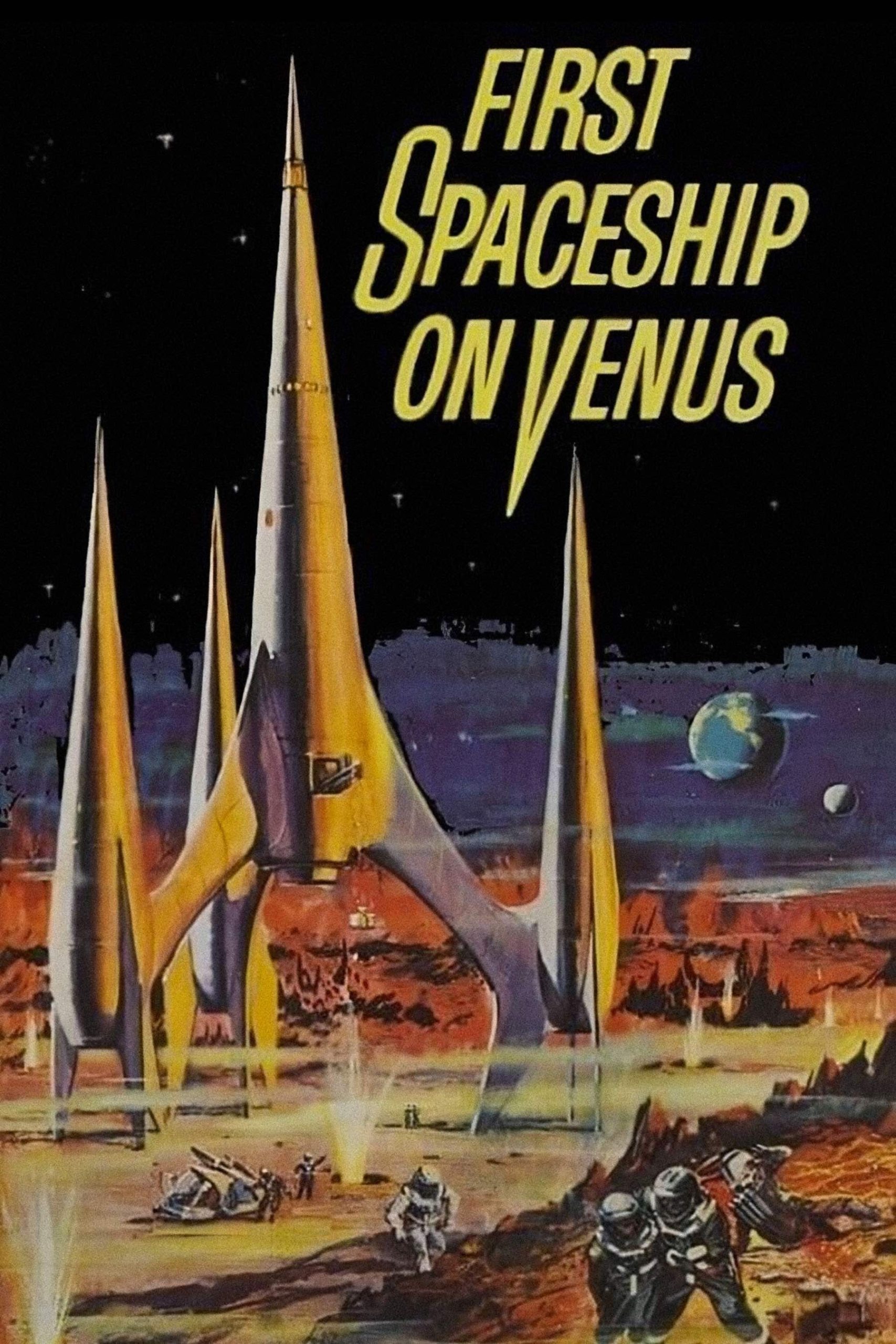
A mysterious magnetic spool found during a construction project is discovered to have originated from Venus. A rocket expedition to Venus is launched to discover the origin of the spool and the race that created it.
14 Nov First Spaceship on Venus (1960)
The Beginning
In 1958 Russia changed the world by launching Sputnik. This really was a shock; modern readers may not appreciate it as of the magnitude (in the US) of 9-11. In terms of national will, there was a more universal mobilisation and commitment of resources than after 9-11, that’s for sure.
Both the Russian and American space efforts were at root militarily motivated, but wrapped in more glorious notions or exploration. And both depended on “captured” Nazi scientists. At the time, East Germany was considered the most oppressed of all the communist clients, and the leaders there tried so very hard to establish itself as the centre of the communist world for technology (which is how Germans see science).
East Germany as a region was cut out of the space program proper, something they wanted to change. So huge government monies went into this movie, including permissions to use American film stock and technology.
As it happens, this film proved enormously popular across the communist world and did have a profound effect on the Soviet space program. See my comments on “Planeta Bur“ for that background.
The avowed goal was to show Germany as the leader and catalyst of a future international collaboration, peace led by a cleansed nation. So look what we have: a rock from the Gobi desert, a meteor from Siberia, a team mobilised for a trip — a team from all continents: American, African, several Asians. And a story from someone widely considered the father of modern science fiction, a sibling through Warsaw Pact.
It really is true that large fortunes, on the order of a trillion dollars, was swung in part by this film, money that could have eliminated all hunger and disease everywhere for generations.
But it has cinematic history as well. Was it the first one to open moving through a star-field as 3D points of light (with titles that recede ahead of us)? A totally fictitious effect that has become necessary since. Otherwise audiences won’t think it “real.”
The west already had “Forbidden Planet,” of course, itself perhaps the most influential science fiction film in the west. In a way, the travel technology was incidental there and in fact the design of the rocket was V2-like. Here, matters of the technology of travel are central.
You have some shades of “Forbidden Planet:” a lost, powerful race. You have some by now staples: lava flows and meteor showers (even in “Star Wars”). There’s an Orrery as a model of and control of the attack plan. The black man is less racistly portrayed than Americans would have. That’s the point. But he still is the “don’t worry, be happy” personality in the group.
They discover a geodesic dome on the planet. In the 60’s this was an architectural icon of modern architecture. Interestingly, there is a wonderful sequence where the explorers come upon this thing and are amazed by it. They are talking to the space ship — cut to the interior of the space ship and what is the ceiling? Yup, a geodesic dome!
Posted in 2006
Ted’s Evaluation — 3 of 3: Worth watching.


No Comments